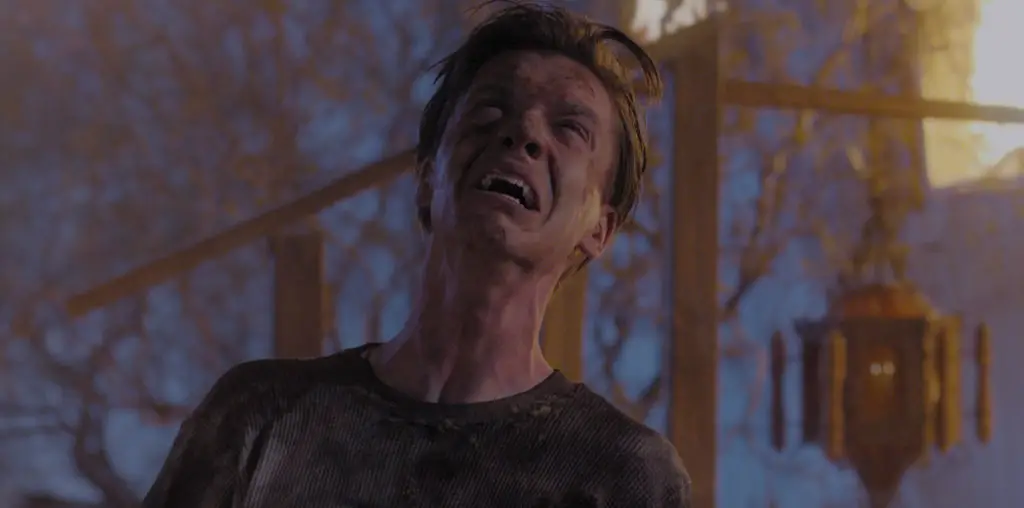
Many reading this will be too young to recall The Patty Duke Show, the principal attraction of which consisted of the technical miracle making it possible for the young actress to play identical cousins. This particular special effect was in its infancy at the time-1963-1966-and I remember it all being handled quite primitively; Patty and Cathy, for example, seemed to spend exorbitant amounts of time addressing one another from opposite sides of the frame. It’s a measure of The Devil’s Double‘s cinematic significance that the movie’s primary achievement lies in pulling off the same gimmick with greater slickness.
It is an otherwise rather dumbfounding and undistinguished affair: As the movie opens, we watch as twin Mercedes Benz sedans (real vehicles we presume; not computer generated replicas) speed across the Iraqi desert on their way to the palatial playboy pad of of Uday Hussein, eldest son of the dictator. Once there, a puzzled soldier is ushered to the inner sanctum. He is Latif Yahia, on whose novel-notice I didn’t say memoir-this movie is based. Yahia is shortly greeted by Uday and the sinister-looking entourage which accompanies him virtually everywhere. The two men are former classmates but, more importantly, they are dead ringers for each other (as one would expect since both characters are played by British actor An Education‘s Dominic Cooper). Why has the notorious psychopath summoned him? He wants him to serve as his double and public stand-in. Yahia has no stomach for Hussein or his depraved, violent lifestyle but it is an offer he can’t refuse. If he did, his family would pay the price.
So the scene is set for the story of a decent man forced into a milieu of unspeakable degeneracy and for a glimpse into the psychology of another man so mad he makes his father look mild-mannered. But that’s not what we get. Regrettably, the wrong filmmaker was recruited to tell the story. Lee Tamahori’s credits include XXX: State of the Union and the Nicolas Cage clunker Next and, as he makes clear over the course of the hour and a half that follows, he desperately wishes those credits included Scarface.
The movie is little more than a succession of scenes in which Cooper’s Uday does a lame Tony Montana impression-hanging out at discos, drinking all day long, cruising in fancy cars, sucking on expensive cigars, growing ever more paranoid, slumping at his desk while snorting mini mountains of blow and, of course, inviting countless innocent bystanders to say hello to his not so little friend. More than once, the picture strays perilously close to parody.
In fact, Hussein’s so vile, deranged and oversexed, Pacino’s creation ends up looking practically Amish next to him. Cooper’s Yahia, on the other hand, is wasted in a different way. Tamahori has the character serve as the film’s conscience so he spends the lion’s share of its running time looking on disapprovingly as Uday rapes, kidnaps and kills.
He’s morally superior, it goes without saying, but that doesn’t make him more interesting. Far more could have been done with the character, such as including, say, even one of the dozen assassination attempts he survived. But that would have cut into the movie’s Tony Montana time and Tamahori wasn’t having any of that. Bad move.
Even with fictionalized elements added, this tale of look-alikes who couldn’t have been less alike had the potential to be wild and insightful stuff. That’s a film, unfortunately, to which The Devil’s Double doesn’t bear even the slightest resemblance.

